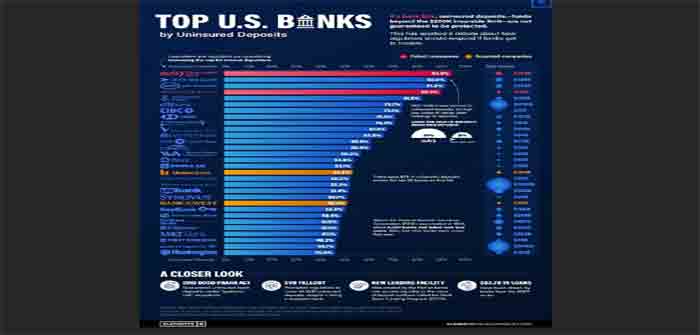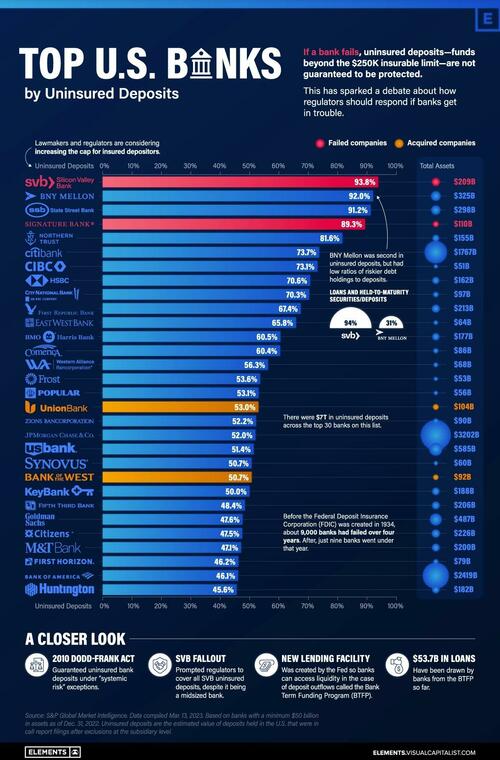
by ZeroHedge News Staff at ZeroHedge
Today, there is at least $7 trillion in uninsured bank deposits in America.
This dollar value is roughly three times that of Apple’s market capitalization, or about equal to 30% of U.S. GDP. Uninsured deposits are ones that exceed the $250,000 limit insured by the Federal Deposit Insurance Corporation (FDIC), which was actually increased from $100,000 after the Global Financial Crisis. They account for roughly 40% of all bank deposits.
In the wake of the Silicon Valley Bank (SVB) fallout, Visual Capitalist’s Dorothy Neufeld and Sabrina Lam look at the 30 U.S. banks with the highest percentage of uninsured deposits, using data from S&P Global.
Which Banks Have the Most Uninsured Deposits?
Over the last month, SVB and Signature Bank went under at lightning speed.
Below, we show how their level of uninsured deposits compare to other banks. The dataset includes U.S. banks with at least $50 billion in assets at the end of 2022.
Bank of New York (BNY) Mellon and State Street Bank are the active banks with the highest levels of uninsured deposits. They are the two largest custodian banks in the U.S., followed by JP Morgan. Custodian banks provide critical infrastructure in the financial system, holding assets for safe-keeping for investment managers and transferring assets, among other duties.
Both BNY Mellon and State Street are considered “systemically important” banks.
Where these banks differ from SVB is that their loans and held-to-maturity securities as a…
Continue Reading
